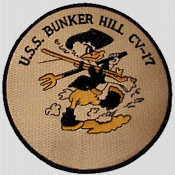
Patch contributed by Mike Smolinski




|
||
| Essex Class Aircraft Carrier | |||||
| Ordered | Laid down | Launched | Commissioned | Decommissioned | Stricken |
|---|---|---|---|---|---|
| 9 Sept 1940 | 15 Sept 1941 | 7 Dec 1942 | 25 May 1943 | 9 July 1947 | 1 Nov 1966 |
| Builder: Bethlehem Steel Corp., Fore River, Quincy, Mass. | |||||
| Click On Image
For Full Size Image |
Size | Image Description | Contributed
By And/Or Copyright |
|
|---|---|---|---|---|
| Name: The Battle of Bunker Hill |
||||
 NS021737 |
117K | CV-17 was named for the Battle of Bunker Hill, June 17, 1775 which, in fact, was mostly fought on adjacent Breed's Hill. The battle was part of the siege of Boston during the Revolutionary War. General Israel Putnam was in charge of the revolutionary forces, while Major-General William Howe commanded the British forces. Although Howe's immediate objective was achieved, it did not affect the siege and the British suffered more than 1,000 casualties — British General Henry Clinton wrote in his diary that "A few more such victories would have surely put an end to British dominion in America." The famous order, "Don't fire until you see the whites of their eyes" was allegedly given by an American officer and popularized by stories about Bunker Hill, but it is not certain who, if anyone at this battle, gave it. NS021737. "The Battle at Bunker's [sic] Hill," drawing by Henry A. Thomas; published by C. Frank King, Boston, c.1875. Library of Congress reproduction # LC-USZ62-4430. NS021737a. An illustrated map of the battle ground on Charlestown peninsula, encompassing Bunker and Breed's Hills, from "History of the Battle of Bunker's [Breed's Hill] on June 17, 1775," George E. Ellis; Boston, 1875. |
Library of Congress |
 NS021737a |
282K | US Army |
| World War II |
||||
NS021741 |
535k | USS Bunker Hill (CV-17), World War II. Overhead plan and starboard profile meticulously drawn by John Robert Barrett. |
Navy Yard Associates |  NS021713a |
69K | The future USS Bunker Hill (CV-17) just after launching, 7 December 1942, one year to the day after the attack on Pearl Harbor. |
Ron Reeves |  NS021713 |
152K | Bunker Hill (CV-17) afloat immediately after launching, at the Bethlehem Steel Company's Fore River yards, Quincy, Massachusetts, 7 December 1942. Several tugs are in attendance and a Navy blimp is overhead. Official U.S. Navy Photograph, from the collections of the Naval History and Heritage Command (NH&HC), # NH 97290. |
Robert Hurst |
 NS021777 |
492k | "Tuesday, 25 May 1943—1130 Captain J.J. Ballentine, U.S.N. formally placed the U.S.S. Bunker Hill in full commission and assumed duties as commanding officer with 137 officers and 1707 men on board for duty operating under the command of the commandant of the First Naval District." |
Ron Reeves | |
 NS021722 |
38k | "This beautiful painting of the new aircraft carrier, Bunker Hill was done by artist Howard Grady, OS2c, USNR. It was presented to the Captain, J. J. Ballentine, at the commissioning ceremonies. Grady is well known for his portraits of prominent people." From Our Navy magazine, mid-September 1943 issue. |
Chester O. Morris | |
 NS021755 |
72k | USS Bunker Hill (CV-17), date and location unknown. |
Courtesy of Scott Koen & ussnewyork.com | |
 NS021782 |
208k | USS Bunker Hill (CV-17), official USN photo. Date and location unknown. |
John Spivey | |
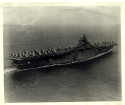 NS021747 |
583k | USS Bunker Hill (CV-17), starboard quarter view, 16 July 1943. Photographed by Photographic Squadron (VD) 2. |
Robert M. Cieri | |
 NS021747a |
401k | USS Bunker Hill (CV-17), stern view, 16 July 1943. Photographed by Photographic Squadron (VD) 2. National Archives and Records Administration (NARA) photo, # 80-G-204786. |
NARA | |
 NS021748 |
39k | A landing mishap of a Curtiss SB2C-1 Helldiver of Bombing Squadron (VB) 17 from Carrier Air Group (CVG) 17 aboard the aircraft carrier USS Bunker Hill (CV-17) in 1943. The SB2C suffered from a lot of design failures and required some 800 changes before becoming fully operational. The crews therefore gave the aircraft names like "The Beast" or "Son of a Bitch, 2nd class" (SB2C). Note that Bunker Hill seems to be equipped only with the SC radar and not yet with the SK-1. Photo from U.S. Navy Naval Aviation News, February 1969. |
Robert Hurst | |
 NS021748a |
101k | A U.S. Navy Curtiss SB2C-1 Helldiver of Bombing Squadron (VB) 17 pictured after losing its tail during recovery aboard USS Bunker Hill (CV-17) during operations in the Caribbean in 1943. The first squadron to recive the Helldiver, VB-17 experienced some growing pains with the type, losing numerous aircraft while operating from shore and aboard Bunker Hill during the carrier's shakedown cruise. National Naval Aviation Museum, photo # 1996.253.292. |
Courtesy of Scott Koen & ussnewyork.com | |
 NS021788 |
303k | A U.S. Navy Curtiss SB2C-1 Helldiver of Bombing Squadron (VB) 17 takes a wave-off during flight operations aboard the aircraft carrier USS Bunker Hill (CV-17) in the Caribbean, in 1943. The first squadron to receive the Helldiver, VB-17 experienced some growing pains with the type, losing numerous aircraft while operating from shore and aboard Bunker Hill during the carrier's shakedown cruise. While flying from Bunker Hill on 11 November 1943, the squadron introduced the aircraft to combat during a raid on Rabaul, and continued flying missions from the carrier until March 1944. After reforming, VB-17 completed a second combat cruise, this time aboard USS Hornet (CV-12) during the period February–June 1945. Among their combat missions were attacks against Tokyo and the Japanese battleship Yamato. National Naval Aviation Museum photo, No. 1996.253.291. |
Robert Hurst Pieter Bakels |
|
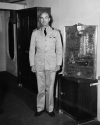 NS021770 |
909k | Captain John J. Ballentine, USN, accepts a bronze plaque for USS Bunker Hill (CV-17), 13 August 1943. National Archives and Records Administration (NARA), # 80-G-205226. |
NARA | |
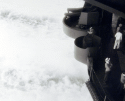 NS021768 |
69k | USS Bunker Hill (CV-17) on full-power run. Note stern of ship and wake, 4 September 1943. Official U.S. Navy Photograph, now in the collections of the National Archives and Records Administration (NARA), # 80-G-205233. |
NARA | |
 NS021771 |
239k | USS Bunker Hill (CV-17), with crew members lining the flight deck, passes through the Panama Canal en route to the Pacific Theater of Operations, 17 September 1943. |
William Stevens | |
 NS021703 |
130k | Newly arrived in the Pacific, shown here underway with her deck full of aircraft. | USN | |
 NS021706 |
177k | Bunker Hill as seen before she was struck by two bomb laden kamikazes. | USN | |
 NS021726 |
131k | Interesting view of VB-17 SB2C-1's turning into the pattern to land aboard Bunker Hill after their raid on Rabaul, November 11th, 1943. Photo by Capt. Robert Wood. |
Steve Whitby | |
 NS021779 |
277k | Burial at sea of an unknown sailor, 1944. The image was taken by W. Eugene Smith, who spent time aboard USS Bunker Hill (CV-17). Time Inc.; The LIFE Picture Collection. |
Robert Hurst | |
 NS021718 |
81k | USS Bunker Hill (CV-17) at sea while participating in strikes on the Palau Islands, 27 March 1944. She is painted in camouflage Measure 33, Design 6A. Official U.S. Navy Photograph, now in the collections of the National Archives (photo # 80-G-K-1560). Note: Though this was originally a color image, the original "Aero Kodacolor" transparency has lost all colors but red and can now only be reproduced in monochrome. |
Scott Dyben | |
 NS021723 |
28k | Believed to have been taken at Majuro atoll, May 1944. |
Mary Luz-Johnsen, daughter of Arthur Luz | |
NS021772 |
132k | USS Bunker Hill (CV-17) at Majuro Atoll, May 1944. Her port side camouflage pattern was the most intricate design applied to any carrier. Photo colorized by Yu Chu. |
Yu Chu | |
 NS021772a |
385k | USS Bunker Hill (CV-17) at Majuro Atoll, May 1944. Her masts and radar antennas have been retouched by the censor. |
US Navy Photo, thanks to Jim Kurrasch, Battleship Iowa, Pacific Battleship Center | |
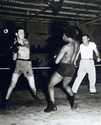 NS021761 |
157k | Boxing matches between representatives of USS Lexington (CV-16) and USS Bunker Hill (CV-17), aboard CV-17. Shown are A.V. Pernino of CV-17 vs. SM1C P.L. Adams, USNR, of CV-16. Photograph released on May 25, 1944. National Archies and Records Administration (NARA) photo, # 80-G-236783. |
NARA | |
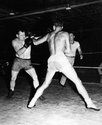 NS021761a |
127k | Boxing matches between representatives of USS Lexington (CV-16) and USS Bunker Hill (CV-17), aboard CV-17. Shown are J.W. West of CV-17 vs. S1C R.M. Gundy of CV-16. Photograph released on May 25, 1944. National Archies and Records Administration (NARA) photo, # 80-G-236786. |
NARA | |
 NS021761b |
155k | Boxing matches between representatives of USS Lexington (CV-16) and USS Bunker Hill (CV-17), aboard CV-17. Shown are T.J. Hand of CV-17 vs. Dunkenley of CV‑16. Photograph released on May 25, 1944. National Archies and Records Administration (NARA) photo, # 80-G-236789. |
NARA | |
NS021759 |
260k | USS Bunker Hill (CV-17), painted in Ms. 32, Design 6A, passing astern of USS Wasp (CV-18), June 1944. |
Courtesy of Scott Koen & ussnewyork.com | |
 NS021754 |
181k | A U.S. Navy Avenger of Torpedo Squadron (VT) 8 is poised for launch from the aircraft carrier USS Bunker Hill (CV-17) for a strike against Saipan on 10 June 1944. Note the rocket rails. National Naval Aviation Museum photo No. 1996.253.1175. |
Robert Hurst | |
 NS021716 |
117k | Battle of the Philippine Sea, June 1944 — USS Bunker Hill (CV-17) is near-missed by a Japanese bomb, during the air attacks of 19 June 1944. The Japanese plane, with its tail shot off, is about to crash, at left. Photographed from USS Monterey (CVL-26). Official U.S. Navy Photograph, now in the collections of the National Archives and Records Administration (NARA), photo # 80-G-366983. |
Scott Dyben Robert Hurst |
|
 NS021716a |
316k | A near miss off the starboard quarter of USS Bunker Hill (CV-17) on 19 June 1944. The ship and Task Group 58.2 were attacked by Japanese aircraft during operations off the Marianas Islands. National Naval Aviation Museum photo, # 1987.096.001.045. CDR Francis N. Gilreath Scrapbook, assembled during his service as Flag Secretary and Aide to Rear Admiral Alfred E. Montgomery. Caption "Task Group 582 under attack by Japanese Dive Bombers - near miss on USS Bunkerhill 6/19/1944" cropped. |
Mike Green John Bakels via Yu Chu |
|
 NS021745 |
170k | Rear Admiral Alfred E. Montgomery pictured with Captain Thomas P. Jeter after presenting him the Legion of Merit for service as skipper of the carrier Bunker Hill (CV-17), 1944. Image is part of a scrapbook assembled by Commander Francis N. Gilreath during his service as Flag Secretary and Aide to Rear Admiral Alfred E. Montgomery. Photo courtesy of the National Naval Aviation Museum. |
Bill Gonyo | |
 NS021792 |
168k | A crowd of U.S. Navy sailors and Marines, in costumes or odd outfits, looking on during the production of the Neptunus Rex "Crossing the Line" ceremony on the flight deck of USS Bunker Hill (CV-17) while the ship was crossing the equator in the Pacific Theater in 1944 (2 September?). In the foreground is a table with the books of the laws of the ceremony, and several men dressed in long coats or robes as judges with mop heads as wigs. |
John Spivey | |
 NS021742 |
86k | A destroyer-escort (DE) dropping depth charges while searching for Japanese submarines in Ulithi anchorage on 20 November 1944, following the sinking of USS Mississinewa (AO-59). A Fletcher-class destroyer is steaming past in the foreground. Two light cruisers (CL) and several other ships are in the distance. Photographed from USS Bunker Hill (CV-17). Official U.S. Navy Photograph, now in the collections of the National Archives (photo # 80-G-270650). |
Naval History & Heritage Command | |
 NS021742a |
105k | Destroyer-escorts (DE) drop depth charges during the search for Japanese submarines in Ulithi anchorage, following the sinking of USS Mississinewa (AO-59), 20 November 1944. A Fletcher-class destroyer is in the left-center background, and an anti-submarine net is in the distance. Photographed from USS Bunker Hill (CV-17). Official U.S. Navy Photograph, now in the collections of the National Archives (photo # 80-G-270656). |
||
 NS021742b |
89k | A destroyer-escort (DE) drops depth charges while searching for Japanese submarines in Ulithi anchorage on 20 November 1944, following the sinking of USS Mississinewa (AO-59). A Cleveland-class light cruiser (CL) and other ships are in the distance. Photographed from USS Bunker Hill (CV-17). Official U.S. Navy Photograph, now in the collections of the National Archives (photo # 80-G-270659). |
||
 NS021790 |
224K | TBM Avenger, landing mishap, 1945. |
Courtesy of Scott Koen & ussnewyork.com | |
NS021749 |
67K | USS Bunker Hill (CV-17) underway on 19 January 1945 after her period in dock at the Puget Sound Navy Yard, four months before she was severely damaged. The ship has a new camouflage scheme (Measure 21); there are two additional 40-mm quad mounts on the port side at flight deck level, and also the usual three below the island on the starboard side. The two aft gun sponsons on the starboard side were extended outwards and an extra AA mount was fitted right at the stern. One of the three deck-edge masts was removed, and the hangar catapult was removed and replaced by a second flight deck catapult. US Navy photo. Photo and text from Aircraft Carriers of the U.S. Navy, by Stefan Terzibaschitsch. |
Robert Hurst | |
 NS021744 |
74K | Vice Admiral Marc A. Mitscher, USN (right), Commander, Task Force 58, confers with his Chief of Staff, Commodore Arleigh A. Burke (at left), on board TF58's flagship, USS Bunker Hill (CV-17), during operations off Japan in February 1945. Official U.S. Navy Photograph, now in the collections of the National Archives (# 80-G-303981). |
Naval History & Heritage Command | |
 NS021743 |
203K | Task Group 58.3, under Rear Admiral Frederick C. Sherman, departs Ulithi on 10 February 1945. Seen from USS Bunker Hill (CV-17) are USS Cowpens (CVL-25), left, and USS Essex (CV-9), center. Task Force 58 conducted attacks against the Tokyo area (16–17, and 25 February) both to neutralize the enemy's airpower before the landings on Iwo Jima (19 February) and to cripple the aircraft manufacturing industry. |
Pieter Bakels | |
 NS021783 |
211K | A Corsair launching from USS Bunker Hill (CV-17) on 16 February 1945. On the same day, planes from Bunker Hill and other carriers bombed Tokyo. Flight deck numerals were dull black and outlined in yellow. |
Courtesy of John Bakels, via Yu Chu |
|
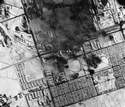 NS021781 |
1.44M | Damage resulting from strike by planes from USS Bunker Hill (CV-17) on Nakajima Ota and on Koizumi airfield, Japan, altitude of 12,000 feet. Photograph released 25 February 1945. U.S. Navy Photograph now in the collections of the National Archives and Records Administration (NARA), # 80-G-304786. |
NARA | |
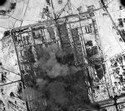 NS021781a |
1.02M | Damage resulting from strike by planes from USS Bunker Hill (CV-17) on Nakajima Ota and on Koizumi airfield, Japan, altitude of 12,000 feet. Photograph released 25 February 1945. U.S. Navy Photograph now in the collections of the National Archives and Records Administration (NARA), # 80-G-304787. |
||
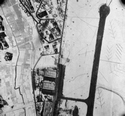 NS021781b |
1.65M | Damage resulting from strike by planes from USS Bunker Hill (CV-17) on Nakajima Ota and on Koizumi airfield, Japan, altitude of 12,000 feet. Photograph released 25 February 1945. U.S. Navy Photograph now in the collections of the National Archives and Records Administration (NARA), # 80-G-304788. |
||
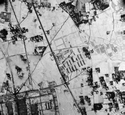 NS021781c |
1.15M | Damage resulting from strike by planes from USS Bunker Hill (CV-17) on Nakajima Ota and on Koizumi airfield, Japan, altitude of 12,000 feet. Photograph released 25 February 1945. U.S. Navy Photograph now in the collections of the National Archives and Records Administration (NARA), # 80-G-304789. |
||
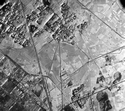 NS021781d |
1.09M | Damage resulting from strike by planes from USS Bunker Hill (CV-17) on Nakajima Ota and on Koizumi airfield, Japan, altitude of 12,000 feet. Photograph released 25 February 1945. U.S. Navy Photograph now in the collections of the National Archives and Records Administration (NARA), # 80-G-304790. |
||
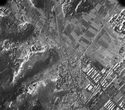 NS021781e |
1.49M | Damage resulting from strike by planes from USS Bunker Hill (CV-17) on Nakajima Ota and on Koizumi airfield, Japan, altitude of 12,000 feet. Photograph released 25 February 1945. U.S. Navy Photograph now in the collections of the National Archives and Records Administration (NARA), # 80-G-304791. |
||
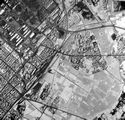 NS021781f |
1.03M | Damage resulting from strike by planes from USS Bunker Hill (CV-17) on Nakajima Ota and on Koizumi airfield, Japan, altitude of 12,000 feet. Photograph released 25 February 1945. U.S. Navy Photograph now in the collections of the National Archives and Records Administration (NARA), # 80-G-304792. |
||
NS021766 |
44K | USS Bunker Hill (CV-17) underway, February to early March 1945. National Archives and Records photo (# 80-G-307051). |
Tracy White, Researcher @ Large | |
 NS021765 |
90K | USS Bunker Hill (CV-17) refueling from USS Aucilla (AO-56) either 13 February 1945 or 18 March 1945, with an unknown destroyer on the starboard side. National Archives and Records photo (# 80-G-307044). |
Tracy White, Researcher @ Large | |
 NS021776 |
759k | Three squadrons of Vought F4U-1D Corsairs, aboard USS Bunker Hill (CV-17): Navy Fighting Squadron (VF) 84 and two Marine Corps squadrons, VMF-221 and VMF-451. April 1945. Image from Storm of Eagles: The Greatest Aviation Photographs of World War II, by John Dibbs, Kent Ramsey, and Robert "Cricket" Renner (Osprey Publishing). |
Robert Hurst | |
 NS021739 |
144K | USS Bunker Hill (CV-17) in a photo probably taken circa the spring of 1945. |
Pieter Bakels | |
 NS021791 |
189K | A Vought F4U-1D Corsair aboard USS Bunker Hill (CV-17), 6 May 1945. Fighting Squadron (VF) 84 and Marine Fighter Squadrons (VMF) 221 and 451 were assigned to Carrier Air Group (CVG) 84 aboard Bunker Hill between December 1944 and May 1945. |
John Spivey | |
 NS021733 |
262K | USS Bunker Hill (CV-17) at sea in 1945 (although dated October 16, 1945 this picture is older, as the ship did not operate aircraft after May 1945). This photo has been autographed by Admiral Arleigh A. Burke, who served on board Bunker Hill in January-May 1945, while he was Chief of Staff to Admiral Marc A. Mitscher, Commander, Task Force 58. Collection of Admiral Arleigh A. Burke, USN. U.S. Naval History and Heritage Command (NH&HC), photo # NH 42373 and NH 124513. |
Robert Hurst | |
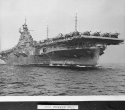 NS021786 |
583K | USS Bunker Hill (CV-17) underway, circa the first half of 1945. |
Darryl Baker | |
 NS021714 |
50K | USS Bunker Hill (CV-17) underway in Puget Sound, Jan. 19, 1945. The ship was commissioned May 25, 1943, Capt. J. J. Ballentine in command. Launched 7 Dec. 1942 by Bethlehem Steel Co., Quincy, Mass. Redesignated CVS-17 Aug. 8, 1953. |
USN | |
 NS021717 |
91k | At sea during strikes against targets on Kyushu, Japan, 18 March 1945. USS New Jersey (BB-62) is in the right distance. Photographed from USS Essex (CV-9). Official U.S. Navy Photograph, now in the collections of the National Archives (photo # 80-G-373737). |
Scott Dyben | |
 NS021753 |
418k | "OFF OKINAWA, 11 April 1945—At 1409 this Jap plane (believed to be a Judy) dove on Bunker Hill from ahead, was flamed by AA of all calibers from Bunker Hill and Essex and exploded upon crashing into sea astern of Bunker Hill." Images part of an album of photographs collected by Captain Carlos W. Wieber during his command of the aircraft carrier Essex, 1944–45. National Naval Aviation Museum photo No. 1983.046.010.130. |
Robert Hurst Bob Canchola, BT, USN (Ret.) |
|
 NS021753a |
542k | |||
 NS021767 |
19k | TBM-3 Avenger, Torpedo Squadron (VT) 84, Carrier Air Group (CVG) 84, USS Bunker Hill (CV-17), showing its tail markings ("G" symbol). First half of 1945. |
Tommy Trampp | |
| Kamikaze Attack, 11 May 1945 |
||||
 NS021701e |
483k | "Things were about like this on ll May, too. Early morning General Quarters had been held, a dam strike had been sent off the ship to Okinawa and for the first time in weeks, fresh fruit was served for breakfast, as the Aldebaran had brought provisions the preceding afternoon. Occasional bogies were reported during the morning, even requiring a brief General Quarters, but they soon disappeared; conditions returned to normal and another strike was about to be sent to Okinawa. But, at 1005, what the crew of the Bunker Hill thought would never happen—did happen! The good luck had run out. Through the thin overcast dove a Jap Zeke to crash among the parked planes aft on the flight deck. Its bomb went through the side of the ship and exploded outboard forward of the port quarter." (Quoted from USS Bunker Hill (CV-17) War History.) Photo courtesy of the National Naval Aviation Museum. |
Bob Canchola, BT, USN (Ret.) | |
 NS021701f |
362k | "Immediately after the parked planes on deck had caught fire and before the general alarm had time to be sounded, a second Jap Judy came streaking in, and, after dropping its five-hundred pound bomb amidship on the flight deck, crashed into the base of the island structure. The Air Officer, CDR G. J. Frauenheim, USNR, and his assistant, LCDR P. H. Clark, Jr., USNR, both stationed at primary fly, received slight flesh wounds when struck by flying fragments torn from the suicide aircraft. Instantly the hangar deck and after gallery deck became an inferno from the explosion and burning gasoline." (Quoted from USS Bunker Hill (CV-17) War History.) Photo courtesy of the National Naval Aviation Museum, # 1983.046.010.141. |
||
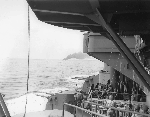 NS015736d |
285k | USS Bunker Hill (CV-17) burning after being attacked by Japanese kamikazes, as seen from USS South Dakota (BB-57), 11 May 1945. |
Pieter Bakels | |
 NS021702 |
427k | Afire after being hit by two Kamikaze suicide planes off Okinawa, 11 May 1945. Photographed from USS Bataan (CVL-29). Official U.S. Navy Photograph, now in the collections of the National Archives and Records Administration (NARA), photo # 80-G-274266. |
Scott Dyben Bob Canchola, BT, USN (Ret.) |
|
 NS021702a |
1.46M | "S-1 – 1st plane has crashed, second is diving and 3rd is near top of smoke pillar." |
U.S. Navy photos | |
 NS021702b |
1.16M | "S-2 – Second plane and bomb are seen exploding amidships. Third plane crashed close aboard and astern." |
||
 NS021702c |
1.19M | "S-3 – Fourth attacker is taken under fire and flamed." |
||
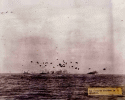 NS021702d |
1.27M | "S-4 – Fourth attacker is splashed." |
||
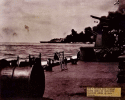 NS021702e |
1.23M | "S-5 – Flames leap through heavy smoke as destroyer (astern) picks up survivors." (Same as NS015701a, cropped differently.) |
||
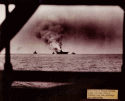 NS021702f |
1.31M | "S-6 – Fires being brought under control with a cruiser and two destroyers assisting." |
||
 NS021701 |
107k | Scene on the carrier's flight deck, looking aft, while her crew was fighting fires caused by Kamikaze hits, off Okinawa on 11 May 1945. Official U.S. Navy Photograph, now in the collections of the National Archives (photo # 80-G-323712). This widely known photograph was taken by Tony Faccone with a Kodak K-4 camera resting directly on the flight deck. The talker holding his huge helmet down over his ears is Art Volkema, who had served most of the war as a lookout in Air Aft, perched high up just behind the stack on the back side of the island, but had been transferred to the ship's bow the day before—every man at his old position was killed in the attack (Maxwell Taylor Kennedy, "Danger's Hour,", Simon & Schuster, New York, 2008, pages 295, 360–361). |
Scott Dyben Pieter Bakels |
|
 NS021701a |
114k | Another view, similar to the one above, but closer to the island. |
Courtesy of Scott Koen & ussnewyork.com | |
 NS021701b |
134k | The hole in the flight deck and what was the deck-edge elevator. A destroyer is alongside, possibly USS English (DD-696) or USS Charles S. Sperry (DD-697). |
Courtesy of Scott Koen & ussnewyork.com | |
 NS021701c |
102k | Fighting fires on the flight deck. |
Courtesy of Scott Koen & ussnewyork.com | |
 NS021701d |
197k | Burning fiercely. |
Courtesy of Scott Koen & ussnewyork.com | |
 NS021719c |
315k | USS Bunker Hill (CV-17) burning, 11 May 1945. The Cleveland-class light cruiser USS Pasadena (CL-65) is visible on the left. Official U.S. Navy Photograph, now in the collections of the National Archives and Records Administration (NARA), # 80-G-K-5271. |
Bob Canchola, BT, USN (Ret.) | |
 NS021719 |
522k | USS Bunker Hill (CV-17) burning after being hit by Kamikaze suicide planes during the Okinawa operation, 11 May 1945. The Cleveland-class light cruiser USS Pasadena (CL-65) is steaming nearby, at left. Official U.S. Navy Photograph, now in the collections of the National Archives and Records Administration (NARA), # 80-G-K-5274. |
Scott Dyben Bob Canchola, BT, USN (Ret.) |
|
 NS021719a |
175k | Port broadside view, 11 May 1945, of USS Bunker Hill (CV-17) burning at the height of the fires. USS Pasadena (CL-65) is in the foreground. US Navy and Marine Corps Museum/Naval Aviation Museum, Photo No. 1983.046.010.043. This image is part of an album of photographs collected by Captain Carlos W. Wieber during his command of the aircraft carrier Essex (CV-9) during 1944–1945. Image mounted on a piece of paper on which appears the original typewritten caption. |
Mike Green | |
 NS021719d |
626k | USS Bunker Hill (CV-17) burns after sustaining two kamikaze hits on 11 May 1945. USS Wilkes Barre (CL-103) is visible at left, USS Randolph (CV-15) at right. National Naval Aviation Museum, Photo No. 1983.046.010.142. |
Bob Canchola, BT, USN (Ret.) | |
 NS021719b |
311k | USS Bunker Hill (CV-17) being assisted in fighting fires aboard by USS Charles S. Sperry (DD-697) and USS Wilkes Barre (CL-103), 11 May 1945. US Navy and Marine Corps Museum/Naval Aviation Museum, Photo No. 1983.046.010.144. This image is part of an album of photographs collected by Captain Carlos W. Wieber during his command of the aircraft carrier Essex (CV-9) during 1944–1945. Image mounted on a piece of paper on which appears the original typewritten caption. |
Mike Green Bob Canchola, BT, USN (Ret.) |
|
 NS021707 |
58k | Burning fiercely after the hits, the ship is turning into the wind to keep the flames and smoke away from the bridge area. | USN | |
 NS021708 |
57k | The ship as seen from the carrier USS Randolph (CV-15). The cruiser USS Wilkes Barre (CL-103) is in the background and is preparing to come alongside to assist in fighting fires. | USN | |
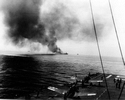 NS021596 |
1.88M | USS Bunker Hill (CV-17) burns after being hit by two kamikazes, 11 May 1945, as seen from USS Randolph (CV-15). Bunker Hill and Randolph were part of Task Group 58.3, under RADM Frederick C. Sherman. |
William Stevens (USN, Ret.) Bob Canchola, BT, USN (Ret.) |
|
 NS021715 |
81k | Burning after being hit by a Kamikaze attack while operating off Okinawa on 11 May 1945. Photographed from USS Wilkes Barre (CL-103), which appears to have received fire damage herself helping to fight the blaze from alongside the carrier. A destroyer is off Bunker Hill's port side. Official U.S. Navy Photograph, now in the collections of the National Archives (photo # 80-G-328618). |
Scott Dyben | |
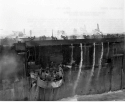 NS021715a |
99k | "FILE NUMBER: 328617—June 27, 1945" "THE USS BUNKER HILL WINS HEROIC BATTLE AGAINST FLAME AND EXPLOSION" "While operating with a fast carrier task force in the 'slot' between Okinawa and Kyushu on the morning of May 11, the USS Bunker Hill, her flight deck jammed with planes ready for take-off, was hit twice within thirty seconds by two Jap Kamikazes. These two suicide hits, acting as fuses to the gasoline-filled and bomb-laden planes, set the stage for one of the most heroic battles of the Pacific War. Fighting suffocating flames and exploding rockets and bombs, the gallant crew, its heroes unnumbered, sacrificed 392 dead or missing and 264 wounded to save their ship. A mass of charred and twisted wreckage, the USS Bunker Hill, ranking as one of the war's major surviving casualties, has returned to a West Coast yard. Workers again will restore her to one of the Navy's finest carriers, ready to write another chapter in the history of a famous name." "The USS Bunker Hill, as seen from the light cruiser USS Wilkes Barre which came alongside to assist in fighting the spreading fires, shows the flight deck of the carrier once the fires were under control. Smoke from the smouldering ruins, brought about by two kamikaze hits, still rises through the guns and wrecked planes." |
David Buell | |
 NS021720 |
73k | Casualties from Kamikaze hits are transferred to USS Wilkes Barre (CL-103) for medical care, off Okinawa on 11 May 1945. Photographed from Wilkes Barre's port side amidships, looking aft. Note SB2C aircraft (one with a burned wing) parked aft on Bunker Hill, smashed 40mm gun position on her starboard side, smoke from still-burning fires, and firefighting water streaming over her side. On Wilkes-Barre note the 40mm quad gun mount in the foreground and the electronic antenna above. Official U.S. Navy Photograph, now in the collections of the National Archives (photo # 80-G-328619). |
NHC | |
 NS021720a |
107k | A casualty from the Kamikaze attack is transferred to USS Wilkes Barre (CL-103). (See above.) National Archives photo # 80-G-328610. |
Pieter Bakels | |
 NS021720b |
75k | USS Wilkes Barre (CL-103) alongside USS Bunker Hill (CV-17). |
Courtesy of Scott Koen & ussnewyork.com | |
 NS021709 |
160k | The ship is seen listing to port from all of the water poured on her fires and pouring through her hull. A few undamaged Helldivers can be seen on her stern. |
Robert Hurst | |
 NS021709a |
59k | USS Bunker Hill (CV-17) afire, as USS The Sullivans (DD-537) steams in the foreground. The Sullivans promptly closed Bunker Hill to render assistance and picked up 166 men forced over the side by the fires that at one point ravaged the carrier. National Archives photo # 80-G-274264. |
Gerd Matthes, Germany | |
 NS021710 |
182k | With USS Wilkes Barre (CL-103) alongside, the destruction of the majority of her air group is shown aft of her island. | USN | |
 NS021710a |
103k | USS Bunker Hill (CV-17) burned and melted aircraft and damaged aft elevator are in evidence after the Kamikaze attack of 11 May 1945. |
Gerd Matthes, Germany | |
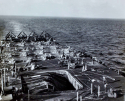 NS021710b |
1.07M | Photo 00005 from an album (AL-36) that documents the kamikaze attack on USS Bunker Hill (CV-17), 11 May 1945. |
Via Bob Canchola, BT, USN (Ret.) | |
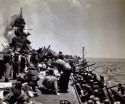 NS021710c |
955k | Photo 00011 from an album (AL-36) that documents the kamikaze attack on USS Bunker Hill (CV-17), 11 May 1945. |
||
 NS021710e |
1.05M | Photo 00015 from an album (AL-36) that documents the kamikaze attack on USS Bunker Hill (CV-17), 11 May 1945. |
||
 NS021710d |
1.09M | Photo 00022 from an album (AL-36) that documents the kamikaze attack on USS Bunker Hill (CV-17), 11 May 1945. Destroyer alongside is probably either USS English (DD-696) or USS Charles S. Sperry (DD-697). VADM Marc A. Mitscher transferred his staff (including CAPT Arleigh A. "31-knot" Burke) and flag to English for further transfer to USS Enterprise (CV-6). The admiral left Bunker Hill at 1630. |
||
 NS021734 |
118K | Aircraft wreckage on the flight deck, after most fires were out following hits by two Kamikazes off Okinawa, 11 May 1945. Official U.S. Navy Photograph, now in the collections of the National Archives (# 80-G-259904). |
NHC | |
 NS021712 |
97K | Alongside with the fires almost out. | USN | |
 NS021711 |
126k | The fires are out, but the damage to her flight deck is shown in this photo. This is where the forward most kamikaze struck the ship. | USN | |
 NS021711a |
219k | As above. |
Courtesy of Scott Koen & ussnewyork.com | |
 NS021711b |
1.10M | As above. |
U.S. Navy photos, via Yu Chu |
|
 NS021711c |
1.19M | As above. |
||
 NS021711d |
1.17M | As above. |
||
 NS021711e |
1.22M | As above. |
||
 NS021711f |
1.29M | As above. |
||
 NS021711g |
1.08M | As above. |
U.S. Navy photos | |
 NS021711h |
1.03M | As above. |
||
 NS021711i |
1.20M | As above. |
||
 NS021711j |
1.14M | As above. |
||
 NS021711k |
1.20M | As above. |
||
 NS021711q |
981k | As above. |
U.S. Navy photos | |
 NS021711r |
1.08M | As above. |
||
 NS021711s |
899k | As above. |
||
 NS021711t |
1.34M | As above. |
||
 NS021711u |
1.02M | As above. |
||
 NS021711l |
1.22M | As above. |
U.S. Navy photos, via Yu Chu |
|
 NS021711m |
1.28M | As above. |
||
 NS021711n |
1.03M | As above. |
||
 NS021711o |
1009k | As above. |
||
 NS021711p |
1.21M | As above. |
||
 NS021711v |
1.18M | As above. |
U.S. Navy photos, via Yu Chu |
|
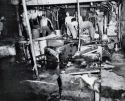 NS021711w |
1.33M | As above. |
||
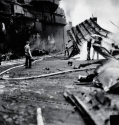 NS021711x |
1.28M | As above. |
||
 NS021711y |
1.11M | As above. |
||
 NS021711z |
1.16M | As above. |
||
 NS021789 |
1.19M | As above. |
Lipo Davis, via Bob Canchola |
|
 NS021789a |
1008k | As above. |
||
 NS021789b |
809k | As above. |
||
 NS021789c |
986k | As above. |
||
 NS021789d |
1.19M | As above. |
||
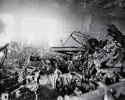 NS021789e |
1.13M | As above. |
||
 NS021789f |
1.27M | As above. |
Lipo Davis, via Bob Canchola |
|
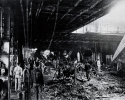 NS021789g |
1.44M | As above. |
||
 NS021789h |
936k | As above. |
||
 NS021789i |
984k | As above. |
||
 NS021789j |
995k | As above. |
||
 NS021731 |
81k | Looking forward on the port side of the island at frame 90 after kamikaze hit. National Archives photo (# 80-G-323701). | Tracy White, Researcher @ Large | |
 NS021732 |
39k | Another view of damage to the flight deck. National Archives photo (# 80-G-323739). | Tracy White, Researcher @ Large | |
 NS021732a |
89k | USS Bunker Hill (CV-17) crewmen look over the bodies of their shipmates after the Kamikaze attack of 11 May 1945. |
Gerd Matthes, Germany | |
 NS021732b |
268k | In the name of the President of the United States, the Commander, FIRST Carrier Task Force, Pacific, presents the BRONZE STAR MEDAL to COMMANDER CHARLES JOSEPH ODEND'HAL, JUNIOR for service as set forth in the following CITATION: "For meritorious achievement in connection with operations against the enemy while serving as Navigator and Officer of the Deck; and later as Executive Officer of a United States aircraft carrier in the vicinity of Okinawa on 11 May 1945. After his ship had been damaged by heavy enemy air attack, he resolutely continued with his duties as Navigator and Officer of the Deck, directing bridge activities and restoring communications. When the Executive Officer collapsed from wounds, he took over the duties of Executive Officer, capably and courageously supervising the activities of damage control, ship control, medical aid and ship's defense. His efforts contributed materially to the saving of his ship and his leadership was at all times in keeping with the highest traditions of the United Service." FREDERICK C. SHERMAN |
The Odend'hal Family | |
 NS021732c |
251k | |||
 NS021724 |
76k | USS Bountiful (AH-9) taking casualties on board from USS Bunker Hill (CV-17) on 12 May 1945, one day after the carrier was devastated by a kamikaze attack. USS The Sullivans (DD-537) is in the foreground. Photographed by PhoM2/c F. W. Pataye, USN of Commander Service Squadron 6. Official U.S. Navy Photograph, now in the collections of the National Archives (# 80-G-350765). |
NHC | |
 NS021728a |
204k | Puget Sound Navy Yard. Damage in action of 11 May 1945. |
David Buell | |
 NS021728 |
78k | Puget Sound Navy Yard. Damage in action of 11 May 1945. Hit No. 2, looking fwd. from aft side of No. 2 elevator. Seattle Branch of the National Archives photo. |
Tracy White, Researcher @ Large | |
 NS021729 |
74k | Puget Sound Navy Yard, 12 June 1945. Aftermost damaged section at Fr. 180 looking aft. Seattle Branch of the National Archives photo. |
Tracy White, Researcher @ Large | |
 NS021730 |
106k | Puget Sound Navy Yard, 17 June 1945. Looking Forw'd and to port from fr.164 flight deck. Seattle Branch of the National Archives photo (RG 181). |
Tracy White, Researcher @ Large | |
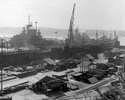 NS021730a |
234k | USS Bunker Hill (CV-17) being repaired at the Puget Sound Navy Yard, 5–30 June 1945, after the May kamikaze damage. NS021730a: Note battleship USS New Jersey (BB-62) in the background. Photos by Thomas McAvoy, LIFE magazine. Used for educational and non-commercial purpose. |
John Chiquoine and Dave Schroeder | |
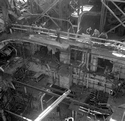 NS021730b |
308k | |||
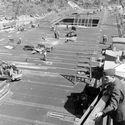 NS021730c |
279k | |||
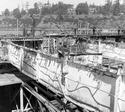 NS021730e |
305k | |||
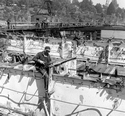 NS021730f |
291k | |||
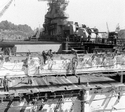 NS021730g |
310k | |||
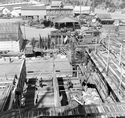 NS021730h |
278k | |||
NS1425027301 |
36k | The covered lighter YF-273 alongside the aircraft carrier USS Bunker Hill (CV-17) at Puget Sound Navy Yard, 19 July 1945. After these repairs, Bunker Hill took part in Magic Carpet transport operations bringing home US military personnel from the Pacific area up until the end of her service life. US Navy photo. |
Robert Hurst | |
 NS021740 |
169K | USS Bunker Hill (CV-17) in a photo most likely taken in or after October 1945. |
Pieter Bakels | |
| Collection of Guy O. Cox |
||||
 NS021774 |
149k | Guy O. Cox was a Navy photographer aboard USS Bunker Hill (CV-17), from late 1943 through May 1945. His photographs are available in the Guy O. Cox Papers (WWII 165), in the State Archives of North Carolina Flickr page. Thanks to Matthew M. Peek, Military Collection Archivist, Special Collections, State Archives of North Carolina. |
Courtesy of the State Archives of North Carolina | |
| Memorabilia |
||||
 NS021738 |
110k | Ship's Bell, Evergreen Aviation & Space Museum ("Home of the Spruce Goose"), McMinnville, Oregon. (Note TBM-3E Avenger just behind the bell.) |
Larry Lee | |
 NS021784e |
967k | USS Bunker Hill, The Monument, vol. 2, No. 1, 1 January 1944. |
Jerry Odette, who was aboard Bunker Hill in 1944, via his cousin, Jerry Hays |
|
 NS021784 |
1.49M | USS Bunker Hill, The Monument, vol. 2, No. 14, 15 April 1944. |
||
 NS021784b |
1.58M | USS Bunker Hill, The Monument, vol. 2, No. 15, 22 April 1944. |
||
 NS021784k |
1.52M | USS Bunker Hill, The Monument, vol. 2, No. 20, 10 June 1944. |
Jerry Odette, who was aboard Bunker Hill in 1944, via his cousin, Jerry Hays |
|
 NS021784l |
1.59M | USS Bunker Hill, The Monument, vol. 2, No. 21, 17 June 1944. |
||
 NS021784m |
1.64M | USS Bunker Hill, The Monument, vol. 2, No. 22, 24 June 1944. |
||
 NS021784f |
1.70M | USS Bunker Hill, The Monument, vol. 2, No. 23, 1 July 1944. |
Jerry Odette, who was aboard Bunker Hill in 1944, via his cousin, Jerry Hays |
|
 NS021784g |
1.72M | USS Bunker Hill, The Monument, vol. 2, No. 24, 8 July 1944. |
||
 NS021784h |
1.63M | USS Bunker Hill, The Monument, vol. 2, No. 25, 15 July 1944. |
||
 NS021784i |
1.38M | USS Bunker Hill, The Monument, vol. 2, No. 26, 22 July 1944. |
||
 NS021784j |
1.70M | USS Bunker Hill, The Monument, vol. 2, No. 27, 29 July 1944. |
||
 NS021784c |
1.40M | USS Bunker Hill, The Monument, vol. 2, No. 29, 12 August 1944. |
Jerry Odette, who was aboard Bunker Hill in 1944, via his cousin, Jerry Hays |
|
 NS021784d |
2.30M | USS Bunker Hill, The Monument, vol. 2, No. 30, 26 August 1944. |
||
 NS021785 |
225k | Censorship Regulations, 15 May 1944. Signed by CDR Wallace B. Mechling, USN, Executive Officer. |
Jerry Odette, who was aboard Bunker Hill in 1944, via his cousin, Jerry Hays |
|
 NS021773 |
354k | "THE HOLIDAY EXPRESS" "Launched December 7, 1942, Quincy, Mass. "She became a landmark in this San Diego Harbor serving the Naval Electronics Laboratory as a test
facility while moored at NAS, North Island, 1963–1973" This plaque is located near the Shelter Island boat ramp, San Diego, Calif. Photo by Andy Torres. |
Andy Torres, via Yu Chu |
|
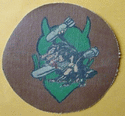 NS021764 |
47k | "The Wolf Gang," Carrier Air Group 84, USS Bunker Hill (CV-17), January–May 1945. VF-84 (F4U-1D Corsairs, F6F-5P & -5N Hellcats), VB-84 (SB2C-4E Helldivers), VT-84 (TBM-3 Avengers), VMF-221 and VMF-451 (F4U-1D Corsairs). Walt Disney patch. |
Tommy Trampp | |
 NS021764a |
31k | "Donald Duck" patch. Walt Disney patch. |
Tommy Trampp | |
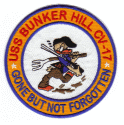 NS021764b |
75k | USS Bunker Hill (CV-17), Gone but Not Forgotten. |
Tommy Trampp | |
 NS021760 |
210K | Aboard USS Bunker Hill (CV-17), Leon Louis Manseu, AOM3/c, qualified to wear the American Area Campaign Medal (14 July 1943) and the Asiatic-Pacific Area Campaign Medal (30 September 1943), crossed the Equator (26 October 1943), and crossed the 180th Meridian (29 October 1943). |
Gerry Manseau, son of Leon L. Manseau | |
 NS021758 |
2.77M | Notice of Separation from U.S. Naval Service, for Leon Louis Manseau, AOM3/c, USNR, USS Bunker Hill (CV-17). |
Gerry Manseau, son of Leon L. Manseau | |
| "Welcome Aboard" |
||||
 NS021736 |
221k | "Welcome Aboard" pamphlet for USS Bunker Hill (CV-17), dated 1945. |
Robert M. Cieri | |
 NS021736a |
226k | |||
 NS021736b |
186k | |||
| In Reserve |
||||
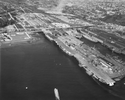 NS021778 |
156k | Deactivated warships tied up at Pier 91, Seattle, Washington, in a photo dated 9 January 1947. On the near side of the pier are the carriers Essex (CV-9); Bon Homme Richard (CV-31); and Bunker Hill (CV-17), closer to camera. On the far side of the pier is the carrier Ticonderoga (CV-14) and the battleships Indiana (BB-58) and Alabama (BB-60). National Archives and Records Administration (NARA) photo, # 80-G-373247. |
Robert Hurst Robert M. Cieri Ron Reeves |
|
 NS021751 |
59k | Bunker Hill (CV-17) at North Island, California, circa 1947, after being mothballed. Photo Robert L. Lawson, from Carrier Air War in Original Color, by Robert Lawson and Barrett Tillman. |
Robert Hurst | |
 NS021704 |
46k | San Diego, February 5, 1966. | ©Richard Leonhardt | |
 NS021705 |
85k | San Diego, February 5, 1966. | ©Richard Leonhardt | |
| As an Electronics Test Platform |
||||
 NS021735 |
79K | Ex-Bunker Hill moored off Point Loma, San Diego, after conversion to an electronics test hulk, date unknown. |
Robert Hurst | |
|
NS021757 |
62K | The electronic test ship Bunker Hill (AVT-9) being escorted by tugs to her moorings at NAS North Island, San Diego, CA. U.S. Navy, Official. |
Robert Hurst | |
 NS021780 |
670K | Naval Air Station North Island, San Diego, CA, circa 1966. Ex-USS Bunker Hill (AVT-9) is in the left background, with USS Ticonderoga (CVA-14) and USS Bennington (CVS-20), moored, on the right. |
Collection of USN Veteran Ray D. Bean, via Yu Chu | |
 NS021775 |
58K | A deck view of the former U.S. aircraft carrier Bunker Hill in 1967. Stricken from the Naval Vessel Register on 1 November 1966, Bunker Hill was used as a stationary electronics test platform at San Diego, California, during the 1960s and early 1970s. She was sold for scrapping in May 1973. U.S. Navy Naval Aviation News, January 1968 issue. |
Robert Hurst | |
 NS021750 |
192k | Ex-USS Bunker Hill (ex-AVT 9) moored at North Island, San Diego, around 1968. |
Photo by Ed Pietzuch | |
 NS021746 |
46k | Ex-USS Bunker Hill (ex-AVT 9) tied up at Naval Air Station, North Island, San Diego, California, in October 1968. |
Richard Leonhardt | |
NS021752 |
55k | The electronics test platform ex-USS Bunker Hill tied up [at] San Diego, California, on 25 June 1970. This photograph shows several special antennas on the island. One of the three quad mounts on the starboard side below the island has been removed, and the other "mothballed." Photo courtesy L. R. Cote. Photo and text from Aircraft Carriers of the U.S. Navy, by Stefan Terzibaschitsch. |
Robert Hurst | |
 NS021721 |
133k | Ex-USS Bunker Hill (ex-AVT-9) tied up at Naval Air Station, North Island, San Diego, California, in October 1971. Though stricken from the Naval Vessel Register, she was still employed as a test platform for the Naval Electronics Laboratory Center. Official U.S. Navy Photograph (USN 1150533). |
NHC | |
NS021725 |
44k | This is a scan of a Polaroid of the ex-USS Bunker Hill taken in 1972 when she was at NAS North Island in San Diego. |
M.J. "Doc" Sanchez HM2 (FMF) USN Ret. | |
 NS021787 |
81k | "Early 1972, San Diego, ex-USS Bunker Hill on the right, a[n Iwo Jima-class] amphibious ship on the left, probably USS Okinawa (LPH-3), and [apparently USS Hooper (DE-1026)] in the center." |
Ken Owens, via Yu Chu |
|
| Ex-USS Bunker Hill |
||||
 NS021769 |
179K | Ex-USS Bunker Hill (CV-17) being towed to Tacoma, Washington, for scrapping, 1973. Tugs present include Deborah Foss and Craig Foss. Naval History and Heritage Command photo (# NH 89313). |
Mike Green | |
 NS021762 |
114K | Ex-USS Bunker Hill (CV-17) arriving at Tacoma, Washington, to be scrapped, April 1973. While under tow Bunker Hill was rammed and damaged by a Greek tanker, note damage to bow area. Naval History and Heritage Command photo (# NH 89304). |
Mike Green | |
 NS021763 |
201K | Ex-USS Bunker Hill (CV-17) being scrapped at Tacoma, Washington, circa 1973. Naval History and Heritage Command photo (# NH 89305). |
Mike Green | |
|
||||
| Crew Contact and Reunion Information | ||||||||||||||||
|
| Related Links |
|
Hazegray & Underway World Aircraft Carrier Pages By Andrew Toppan. |
| Main Photo Index |
Aircraft Carrier Photo Index Page |
Auxiliary Aircraft Landing Training Ship (AVT) Index Page |
Comments, Suggestions or Image submissions, E-mail Carrier Information
Problems and site related matters, E-mail Webmaster
This page was created by Paul Yarnall and is maintained by Fabio Peña
![]()
Last update: 8 March 2025